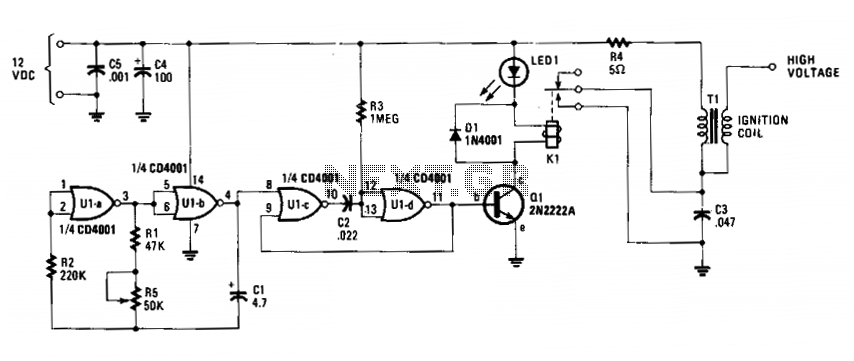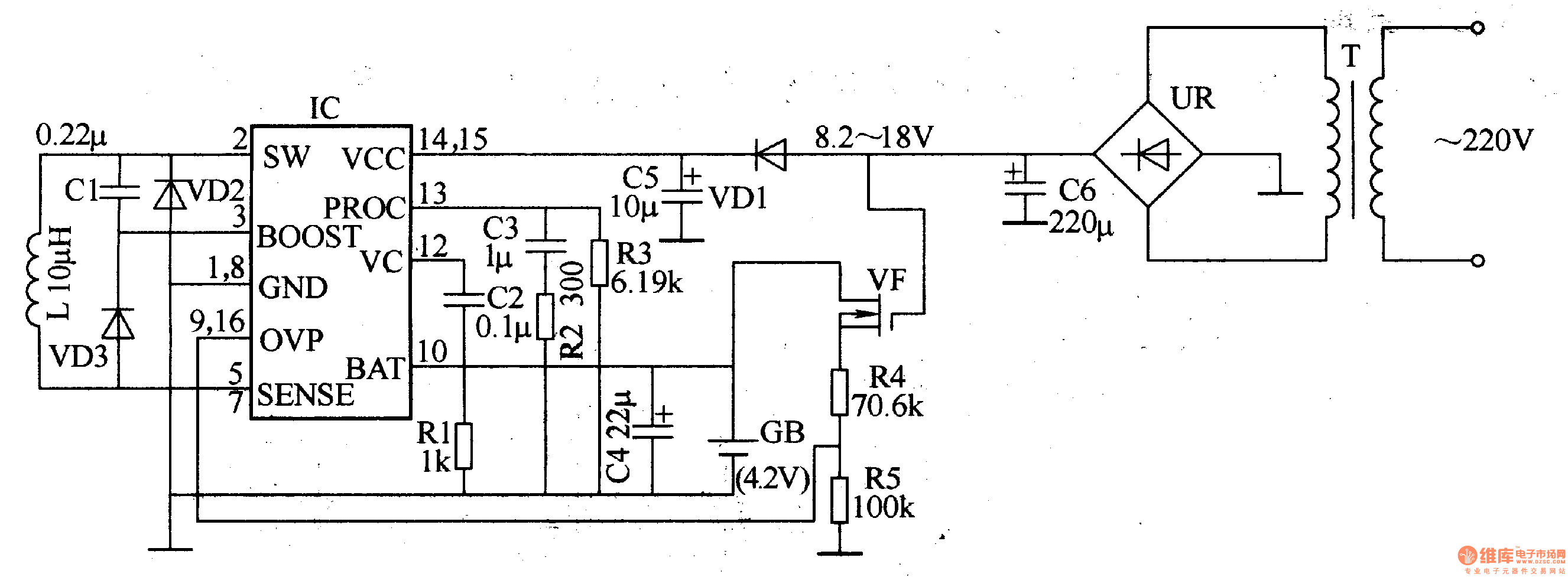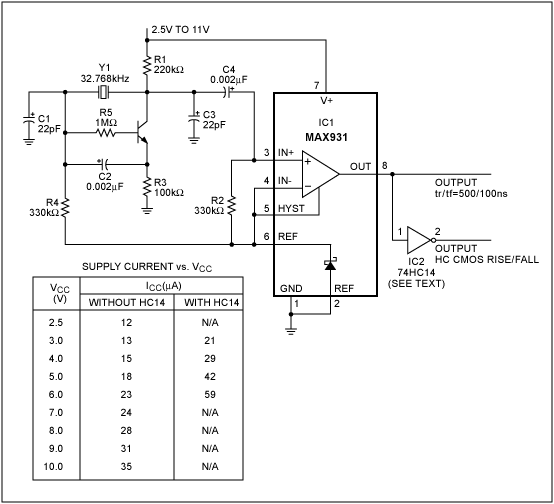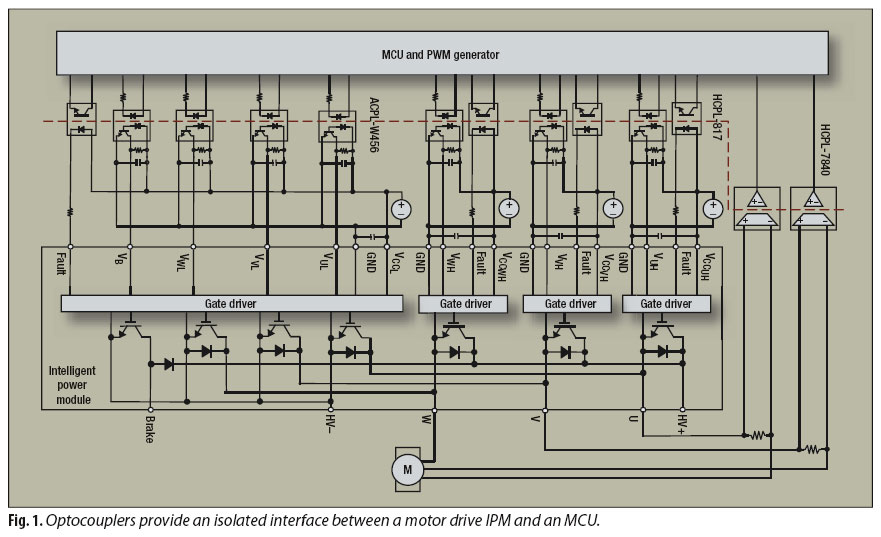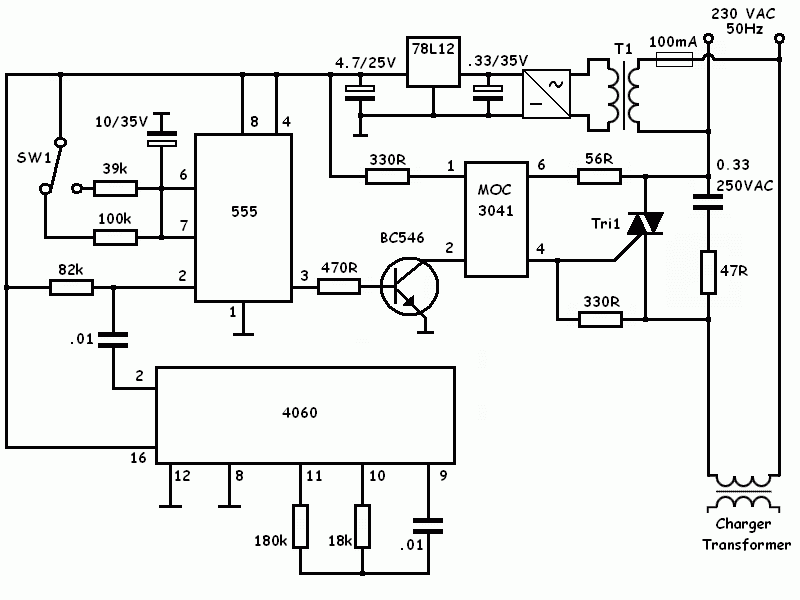
Deluxe Charge Rate Limiter for Small Capacity NiCad Batteries
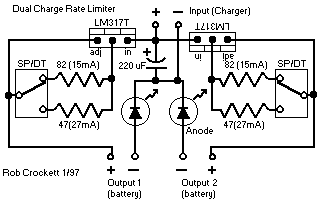
This is an advanced version of a basic charge rate limiter that allows for the simultaneous charging of two battery packs from a single wall charger. For detailed circuit descriptions and parts lists, refer to the simple charger page. Given that wall chargers typically supply around 55mA, it is advisable not to exceed a charging rate of 27mA per pack, ensuring a total current draw of no more than 54mA.
The dual battery charging circuit operates on the principle of limiting the charge current to prevent overheating and potential damage to the batteries. It incorporates two identical charging paths, each designed to handle one battery pack. Each path includes a series resistor to limit the current, ensuring that the charging rate remains within safe limits as dictated by the specifications of the batteries being used.
The circuit is powered by a standard wall charger that outputs approximately 55mA. This output is split between the two battery packs, allowing for efficient charging without exceeding the maximum current capacity of the wall charger. It is critical to select appropriate resistors to achieve the desired charging current for each battery. The resistors should be calculated based on the voltage drop across them and the target charging current, ensuring that each battery receives its designated 27mA.
Protection features may also be included in the design, such as diodes to prevent reverse current flow and ensure that the batteries do not discharge back into the charger. Additionally, capacitors can be added for smoothing the voltage and reducing ripple, further enhancing the reliability of the charging process.
Overall, this dual charger circuit is an effective solution for charging two battery packs simultaneously while maintaining safe charging parameters, making it suitable for a variety of applications where space and power efficiency are paramount.Here is a deluxe version of the simple charge rate limiter, using the same idea but with the ability to charge two packs simultaneously from a single wall charger. For circuit description and parts list, see the simple charger page. Since wall chargers provide about 55mA, you should not use this dual circuit to charge batteries at rates greater th
an 27mA (for a total of 54mA). 🔗 External reference
The dual battery charging circuit operates on the principle of limiting the charge current to prevent overheating and potential damage to the batteries. It incorporates two identical charging paths, each designed to handle one battery pack. Each path includes a series resistor to limit the current, ensuring that the charging rate remains within safe limits as dictated by the specifications of the batteries being used.
The circuit is powered by a standard wall charger that outputs approximately 55mA. This output is split between the two battery packs, allowing for efficient charging without exceeding the maximum current capacity of the wall charger. It is critical to select appropriate resistors to achieve the desired charging current for each battery. The resistors should be calculated based on the voltage drop across them and the target charging current, ensuring that each battery receives its designated 27mA.
Protection features may also be included in the design, such as diodes to prevent reverse current flow and ensure that the batteries do not discharge back into the charger. Additionally, capacitors can be added for smoothing the voltage and reducing ripple, further enhancing the reliability of the charging process.
Overall, this dual charger circuit is an effective solution for charging two battery packs simultaneously while maintaining safe charging parameters, making it suitable for a variety of applications where space and power efficiency are paramount.Here is a deluxe version of the simple charge rate limiter, using the same idea but with the ability to charge two packs simultaneously from a single wall charger. For circuit description and parts list, see the simple charger page. Since wall chargers provide about 55mA, you should not use this dual circuit to charge batteries at rates greater th
an 27mA (for a total of 54mA). 🔗 External reference
